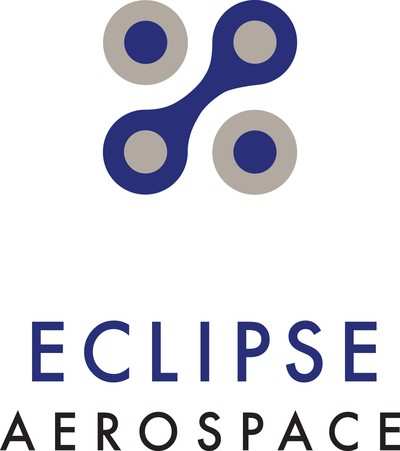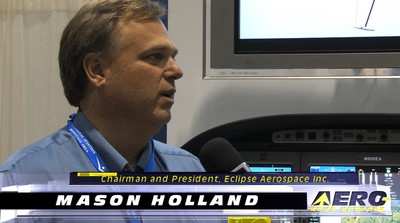Tue, Sep 21, 2010
VLJ Revolution Keeps Coming Back... Incrementally
Never Say Die... The Eclipse 500 keeps trucking toward a solid
comeback with the news that the bird will shortly be back to
flitting around at FL410. Eclipse Aerospace has confirmed the
completion of an enhanced windshield application for the
dissipation of precipitation static on windshields, and aircraft
design changes for operation up to 41,000 feet. EAI committed to
bring these upgrades to market for existing Eclipse aircraft owners
after EAI acquired the assets of the previous company.

The new FAA certified windshield application uses a thin carbon
strip that is adhered directly to existing Eclipse twin-engine jet
windshields. This maintenance-free strip is bonded across the
windshield and to the aircraft structure creating a conductive
path, which acts as a diverter to dissipate potential precipitation
static under certain flight conditions.
“This new diverter strip replaces the previous
chemical-based application, which was hard to apply and difficult
to maintain,” stated Ken Ross, President of Eclipse
Aerospace, Inc. Global Service and Support Division. “We are
pleased to finalize this part of the Eclipse Jet service offerings
for our customers, who are enthusiastic about the new windshield
applications.”

In addition to the improved windshield application, EAI also
announces the successful completion of the engineering requirements
addressing the existing FAA Airworthiness Directive, restricting
flight to 37,000 feet. Eclipse is actively testing these
modifications and has completed the final design. Final
certification of the aircraft modifications are expected prior to
the end of the year. After installation in the aircraft, these
modifications will permit the EA500 to return to a service ceiling
of 41,000 feet.
“What an exciting time for Eclipse and our
customers,” said Mason Holland, Chairman and CEO of Eclipse
Aerospace, Inc.

“The windshield upgrade and return to 41,000 feet were our
most difficult challenges to overcome in our upgrade program. By
completing these projects we are officially announcing that the
initial commitments to our existing customers have been met. We
look forward to continuing to provide service for our customers
while advancing innovations for the Eclipse Twin Engine Jet through
our Total Eclipse program.”
More News
Light Gun A handheld directional light signaling device which emits a brilliant narrow beam of white, green, or red light as selected by the tower controller. The color and type of>[...]
"The journey to this achievement started nearly a decade ago when a freshly commissioned Gentry, driven by a fascination with new technologies and a desire to contribute significan>[...]
Aero Linx: JAARS, Inc. For decades now, we’ve landed planes on narrow rivers and towering mountains. We’ve outfitted boats and vehicles to reach villages that rarely se>[...]
"Our driven and innovative team of military and civilian Airmen delivers combat power daily, ensuring our nation is ready today and tomorrow." Source: General Duke Richardson, AFMC>[...]
Aircraft Conflict Predicted conflict, within EDST of two aircraft, or between aircraft and airspace. A Red alert is used for conflicts when the predicted minimum separation is 5 na>[...]
 ANN's Daily Aero-Term (04.20.24): Light Gun
ANN's Daily Aero-Term (04.20.24): Light Gun Aero-News: Quote of the Day (04.20.24)
Aero-News: Quote of the Day (04.20.24) ANN's Daily Aero-Linx (04.21.24)
ANN's Daily Aero-Linx (04.21.24) Aero-News: Quote of the Day (04.21.24)
Aero-News: Quote of the Day (04.21.24) ANN's Daily Aero-Term (04.21.24): Aircraft Conflict
ANN's Daily Aero-Term (04.21.24): Aircraft Conflict





